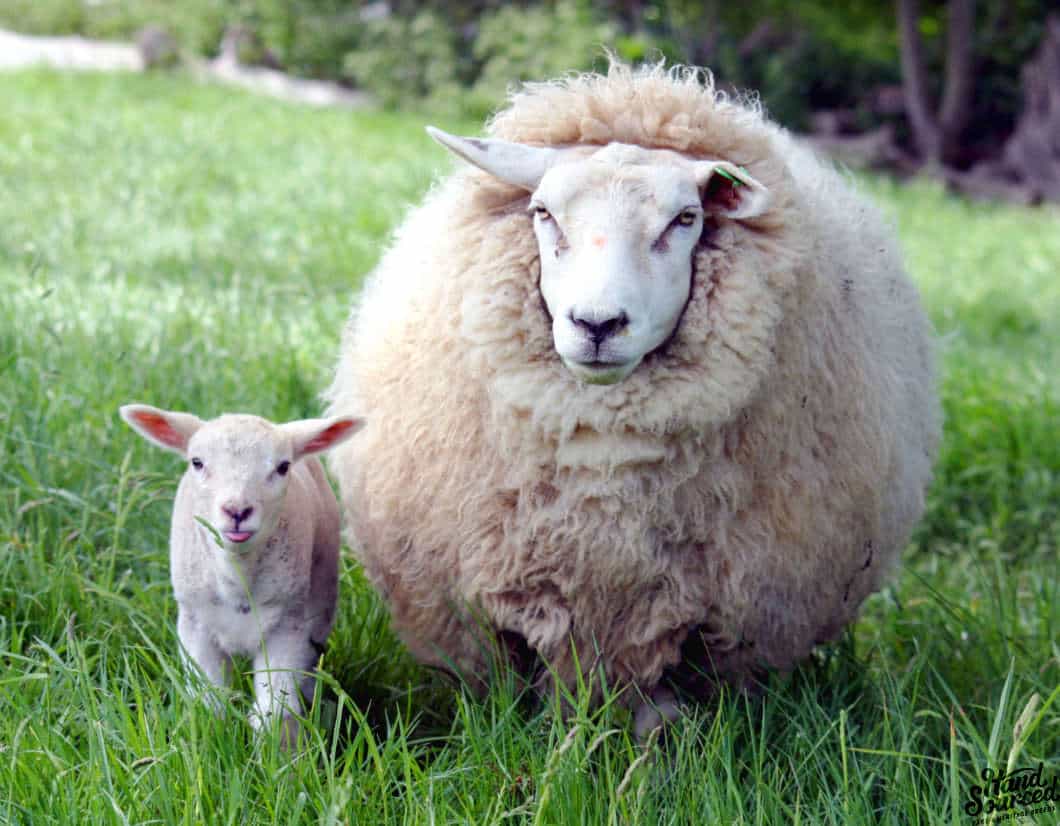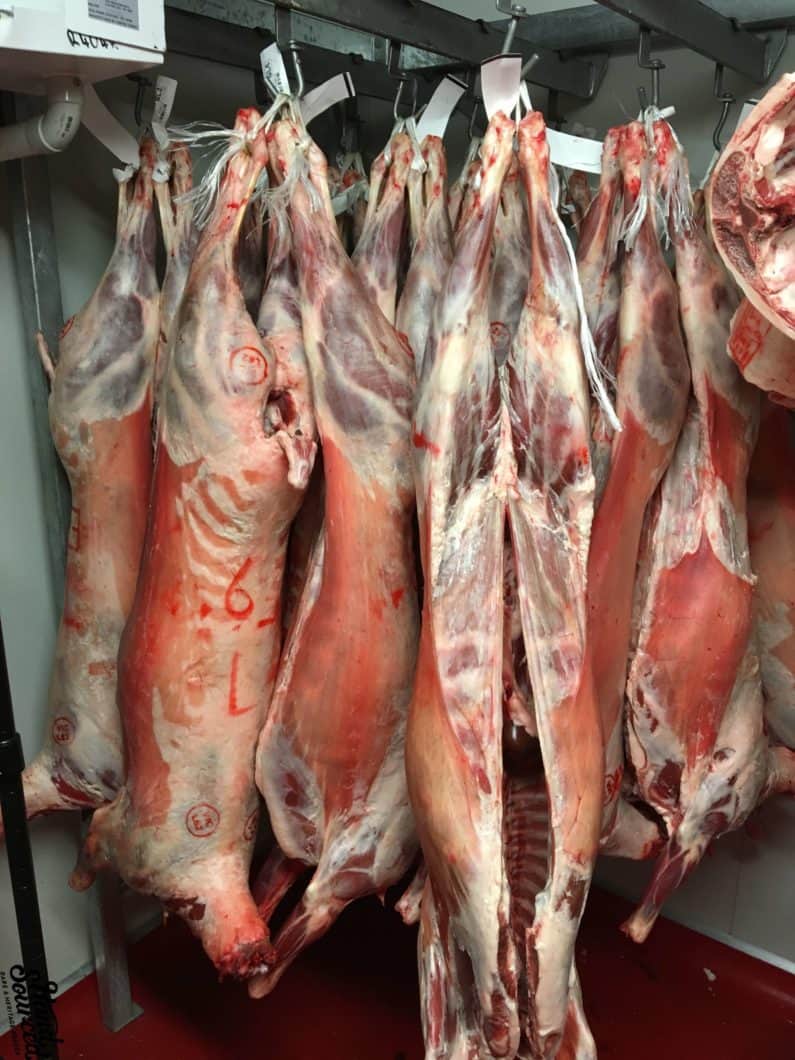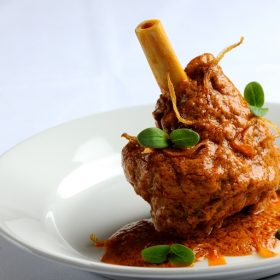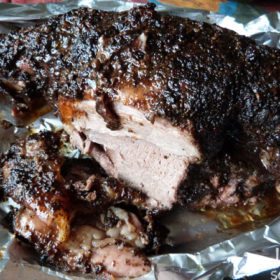We’ve all heard the expression “mutton dressed as lamb” – and probably can apply it to people! But in the true sense of mutton, hogget, and lamb – do you know the difference?

The strict definitions for lamb, hogget and mutton vary considerably between countries. Generally speaking:
- Lamb – a young sheep under 12 months of age which does not have any permanent incisor teeth in wear. A newborn lamb has no teeth, but milk teeth appear in the lower jaw within a week or so.
- Hogget- a young sheep or maiden ewe having no more than two permanent incisors in wear. The central incisors replace the front milk teeth (hence the expression ‘2 tooth’ interchangeable with the term ‘hogget’). Still common in farming usage, it is now rare as a domestic or retail term for the meat. Much of the “lamb” sold in the supermarkets is actually “hogget”.
- Mutton- a female (ewe) or castrated male (wether) sheep having more than two permanent incisors in wear or a sheep over two year old. In sheep-speak, the next 2 teeth appear between 12-19 month, and the sheep becomes a ‘4 tooth’, then a ‘6 tooth’ around 23-26 months, and an ‘8 tooth’ or ‘full mouth’ from 28-48 months onwards.
To confuse things in the ‘how old is lamb before it is hogget’ department, States in Australia vary in lamb definition. In QLD, certified lamb must not have cut its first two permanent teeth. Nutrition and hydration play a big part in how late the lamb cuts teeth, with well-nourished, well-hydrated lambs breaking gum earlier.
Eating Quality
The younger the lamb is, the smaller the lamb will be, however, the meat will typically be more tender. Sheep mutton (not to be confused with goat meat, which is known as mutton throughout eastern countries) has a less tender flesh. In general, the darker the colour, the older the animal. Mutton can be tougher than lamb, but makes up for this by the deeper flavour, perfectly suited for longer, low and slow cooking and casseroles, curries and stews. Mutton has a rich and delicious mature taste and when cooked properly is just as tender as lamb. The price is not reflective of quality. Mutton isn’t just ‘old meat’. It’s deep and rich and tasty – and very economical.
In Bangladesh, India, Indonesia, Malaysia, Pakistan and Singapore, the term of mutton refers to goat meat. In Indonesian, lamb applies to domba muda and goat refers to kambing.
Quick Guide: How to tell if you are buying genuine lamb
True lamb will always be stamped with red ‘lamb paint’. These ‘lamb stamps’ serve several purposes. Apart from certifying the carcass is certified as lamb, they tell us the name of the abattoir where the lamb was processed, and their destination (our destination is the number included in the stamp). In the image below, The stamp tells us that these bodies are lamb (over mutton or hogget), the abattoir BVM (where we had this produce slaughtered); and the destination (us, here at Hand Sourced).

It is illegal for any abattoir in Australia to stamp mutton or hogget as lamb. To do so incurs substantial fines.
All our lamb is guaranteed true lamb grown by Justin and Rita Porker on their organic family farm. And, because we buy through only this producers, there’s no chance of us – or you – being fleeced. Single origin produce all the way.






recently I bought lamb chops at coles supermarket. they were as tough as mutton and on closer inspection there was no evidence of a lamb stamp. presumeably I should have returned the uncooked chops for credit. Does lamb sold in queensland have to bear a lamb stamp?
Hi Robert – the way I understand the regulatory system to work, the answer is yes. In QLD, stamping requirements are limited to identification of the processing establishment for product traceability purposes. This document might prove interesting for you: http://www.aph.gov.au/Parliamentary_Business/Committees/Senate/Rural_and_Regional_Affairs_and_Transport/Completed_inquiries/2008-10/meat_marketing/interim-report/c02
I bought lamb loin chops three weeks ago and froze them. Last week I thawed out half of them and grilled them. They were so tough that they were inedible. I have put the rest of them in the pressure cooker for stew.
I appreciate that the classification of lamb has changed, but I expect to be able to grill lamb loin chops. I really love lamb, but I’ll be avoiding buying it in future, sadly. If it had been marked as “hogget” I would have known to stew it.
That’s so disappointing, Vivienne. Are you aware that true lambing is a ‘season’? So buying sheep meat at different times of the year will also mean you might not be getting what you are paying for.
I bought a leg of lamb from Woolworths that had no stamp on it. The outer skin was totally removed. No identification at all, very sus.
Yes, there will be a big difference in supermarket quality, unfortunately. We are so lucky to be able to offer alternatives from small farms.
Hi Shirley,
We have been loving all of the venison, goat and boar we have had from you and are hoping to get some mutton.
I was hoping to see a picture of the carcass, or the cuts to get an idea of the fattiness of the meat.
Cheers,
A.
Hi Andre – thanks for the feedback. The sheep are still wandering around paddocks at the moment – we only kill and process the amount of animals ordered. Once the sheep is processed, the day it’s broken down will need to be the day it’s packed into cuts and packaging ready for transport. I am not at all sure how you could see the carcass before it’s cut when it’s then cut to the specific order requirements. (I am not sure if I’ve even made sense!) I can see if there are any photographs of the last process? Every animal will be different, just as Mother nature intended. 🙂
I live in Ryde, NSW. I have been trying to buy Mutton for ages. Can I order a leg of Mutton from you ?
You can order mutton any time by visiting the product page here. Once our small scale farm is ready to release the product, the producer will let us know a few weeks ahead of time, and pre-orders will be given first opportunity. Please remember we are a wholesale based supply chain, and work with directly with the farms to supply you with the best product possible so minimum quantities apply. You can read more about that by popping over to our “about” page.